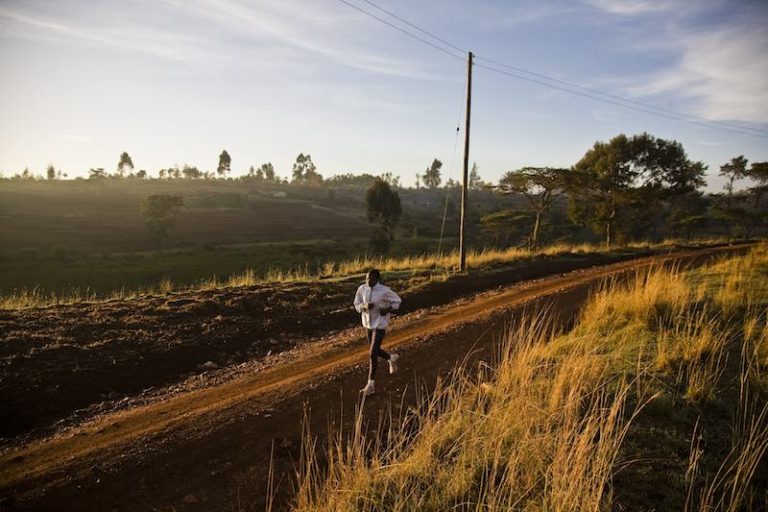
The negative split is a strategy that is coming back to the forefront with Eliud Kipchoge’s marathon world record. Let’s see together what it is and how this race management strategy can be useful in preparing for your upcoming races!
Contents
The negative split: finishing faster in the second half of the race
We could translate “negative split” from English as “negative split time.” It involves running the second half of the race faster than the first half. For example, for a 10km run in 50 minutes, the first 5km can be done in 25’30 and the second in 24’30. The runner went 1 minute faster in the second half of the race. For a marathon in 3h15, for example, the first half can be run in 1h40 and the second half in 1h35, meaning the runner went 5 minutes faster in the second half. This race management is used for distances from 1500 meters to the marathon.
In your first race, did you probably start faster than your initial goal? It’s normal, with the race atmosphere and adrenaline, you were “carried away” by the crowd. The disadvantage? By mid-race, you’re struggling and trying to finish as best as you can 😕
The negative split is a race strategy that can allow you to gradually accelerate, provided you have the right training. You can start a bit slower than your target pace (between 2% and 4% slower, or about 5 seconds per kilometer). You will then be fresher at the end of the race, overtaking runners (which is very motivating 😜) and better managing your race finish.
The negative split, a tactic used by the best marathoners
In the fall of 2018, marathon champions Eliud Kipchoge and Mo Farah brought this strategy back into the spotlight. One set the marathon world record and the other the European record. They have one thing in common: they both ran a negative split!
Kipchoge ran his first half in 1h01’06 and his second half in 1h00’33. An extraordinary performance, with the last kilometer at an insane speed (21.5km/h)! Mo Farah, on the other hand, ran the first half in 1h03’06 and the second in 1h02’55!
The negative split in training
During a interval training session, the heart rate always takes a bit of time to rise during the first repetitions, so it is also interesting to accelerate gradually throughout the repetitions in training. This will also prepare you for a negative split race strategy. You can also finish your long run with about ten minutes a bit faster 😉 You can also try the Yasso session, which involves running 10x 800m to estimate your marathon time!
I invite you to try this strategy in one of your next races and see if it suits you best. Before you can use the negative split, proper preparation is necessary. Prepare yourself with the RunMotion Coach app.